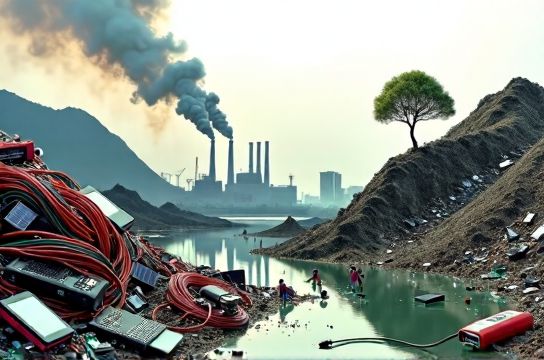The Environmental Impact of Mass-Produced Bizarre Asian Gadgets
- 时间:
- 浏览:25
- 来源:OrientDeck
Let’s face it — if you’ve spent more than five minutes browsing online marketplaces like AliExpress or Taobao, you’ve probably stumbled upon some seriously wacky gadgets. From USB-powered slippers to Bluetooth-enabled chopsticks, these bizarre Asian inventions are equal parts genius and WTF. But behind the viral videos and late-night impulse buys lies a darker truth: the environmental cost of mass-producing these quirky items is piling up faster than your unread Amazon emails.

Why Are These Gadgets So Popular?
Thanks to social media and global e-commerce, niche gadgets from East Asia — especially China, Japan, and South Korea — have gone mainstream. They’re cheap, novel, and often solve problems we didn’t know we had (looking at you, automatic noodle soup stirrer). A single TikTok video can send sales soaring from hundreds to millions overnight.
But here’s the kicker: most of these products are made from non-recyclable plastics, use low-grade electronics, and are shipped across the globe in excessive packaging. And because they’re so inexpensive — sometimes under $5 — consumers treat them as disposable.
The Hidden Cost of Quirky Tech
According to the United Nations’ Global E-Waste Monitor 2023, the world generated **62 million metric tons** of e-waste last year. Alarmingly, less than 20% was properly recycled. A growing chunk of that? You guessed it — mini-fans, LED fortune cats, and selfie ring lights from Shenzhen factories.
These gadgets often contain hazardous materials like lead, mercury, and brominated flame retardants. When tossed into landfills (which many are), they leach toxins into soil and water. Plus, their short lifespans mean constant replacement, fueling a cycle of overproduction and waste.
By the Numbers: The Lifecycle of a Weird Gadget
Let’s break down what happens to your average quirky Asian gadget:
| Stage | Environmental Impact | Avg. Carbon Footprint |
|---|---|---|
| Manufacturing | High energy use, plastic waste, labor concerns | 1.2 kg CO₂e |
| Shipping (from Asia to US/EU) | Maritime emissions, packaging waste | 0.8 kg CO₂e |
| Lifespan | 6–12 months (often breaks quickly) | N/A |
| End-of-Life | 90% ends up in landfills or incinerated | 0.5 kg CO₂e (from decomposition) |
Source: UNEP & Global E-Waste Statistics Partnership
Can Innovation Be Sustainable?
It’s not all doom and gloom. Some companies in Japan and South Korea are pushing for greener designs — think bioplastics, modular electronics, and take-back programs. For example, Panasonic’s Eco Ideas line focuses on energy efficiency and recyclability, even for small gadgets.
But for every eco-conscious innovator, there are ten factories churning out rainbow-colored phone sanitizers with no off switch.
What Can Consumers Do?
- Think before you click “Buy Now” — Do you really need a singing toilet paper holder?
- Support brands with sustainability certifications — Look for CE, RoHS, or EPEAT labels.
- Recycle properly — Use e-waste drop-off points instead of tossing gadgets in the trash.
- Buy local when possible — Reduces shipping emissions and supports ethical labor practices.
The Bottom Line
The era of bizarre Asian gadgets isn’t ending anytime soon — and honestly, part of us doesn’t want it to. Creativity and fun have their place in tech. But as consumers, we need to ask: Is this cool gadget worth the environmental price tag? By making smarter choices, we can enjoy innovation without trashing the planet.